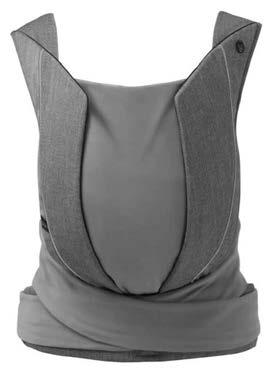RUNNING HEAD
Jenny Ward, director of services at The Lullaby Trust, says: “ Many parents ask me at The Lullaby Trust for advice on what bedding their baby needs. To reduce the risk of sudden infant death syndrome (SIDS), we always advise that babies up to the age of 12 months sleep in a cot or Moses basket with a firm, flat, waterproof mattress that’s in good condition, and a sheet or blanket. Loose blankets can pose a risk to young babies, as they can cover the child’s face or head. Make sure the blanket is tucked in firmly, no higher than the baby’s shoulders or sleeping bag, and that the baby is in the feet-to-foot position. Babies also lose heat from their heads, so it’s important that loose bedding doesn’t accidentally cover her head, making her too hot. You should also make sure she is in a room at a comfortable 16-20°C. If you worry your baby is getting too hot, feel her tummy and remove a layer of bedclothes if her skin is hot or sweaty. Any extra bedding such as duvets or pillows, or accessories such as cot bumpers, can increase the risk of sudden infant death syndrome or an accident occurring. The research behind the safer sleep advice applies to babies under 12 months of age. Once they’re over 12 months old, it’s up to the parents what bedding they choose to use. Sudden infant death syndrome is very rare over 12 months. However, after 12 months babies are far more mobile so make sure whatever you chose takes this into account. The Child Accident Prevention Trust and ROSPA have a lot of good advice based on a child’s age on what to look out for.”
HOW MUCH FOOD SHOULD I BE FEEDING MY ONE YEAR OLD? Alice Fotheringham, infant nutritional specialist at Piccolo, says: “Once your little one has reached her first birthday, she should be eating a range of different foods for breakfast, lunch and dinner every day. By now you should have moved on to offering chopped and minced foods. It’s important to encourage little ones to start chewing by introducing harder foods and different textures, as well as helping develop the muscles needed to utter their first words. Every baby is different and so there’s no fixed portion size as such: it’s much better to focus on a variety of ingredients – think a rainbow of colours – and look at what she eats over the course of a whole week, not just day-to-day, to make sure she is getting a balanced diet. Babies’ appetites often drop when they turn one, as their growth rate slows right down. They also start asserting their independence and enjoy increased activity levels which can make them more fussy about what they want to eat and when. It’s perfectly normal (even though it can be frustrating for you) for your little one to love a certain food one week and completely refuse it the next! It’s important to read her cues and be guided by her appetite. Great meal options include spaghetti Bolognese, fish pie (make sure the fish is bone free) or risotto. It’s important to avoid filling them up with milk or empty snacks – use snacks to get some good fat or protein into their diet such as cream cheese or houmous on an oatcake, or sugar-free peanut butter on toast or apple slices.”
BABIES’ APPETITES CAN DROP WHEN THEY TURN ONE, AS THEIR GROWTH RATE SLOWS 112 | The Ultimate Baby Book 2021
I’M GOING AWAY WITH MY 10 MONTH OLD. WHAT SHOULD I PACK IN MY FIRST AID KIT? Kate Ball, founder of Mini First Aid, says: “Firstly you are very sensible to pack a first aid kit – whether it’s somewhere sunny, or just to the local park, you never know when you might need one. Always make sure that your first aid kit is accessible; keeping it under the buggy or in a change bag is perfect for when you are out and about. At home, keep your first aid kit in a place that you can easily access. In a waterproof pouch, keep the following: • Bandages • Safety-pins • Hypoallergenic plasters • Dressing pads • Micropore tape • Scissors (you’ll need to pack your kit in your checked luggage if flying) • Tweezers • Individually wrapped wipes (avoid alcoholbased wipes as they sting for little ones) • Burn gel In a personal first aid kit, you may also want to consider adding: • Any medication that your child requires • A sachet of paracetomol suspension and measuring spoon • Baby wipes for cleaning hands after a muddy fall • A spare nappy. Did you know that you can use a clean nappy or breast pad or even sanitary towel on a bleeding injury? • Useful numbers (doctor, health visitor and next of kin) And always make sure that your first aid kit is kept safe away from little hands. Don’t forget in a medical emergency call 999 or 112.”
SOURCES: APTACLUB; CHEMISTSWORLD.COM; FACTRETRIEVER.COM; AVIVA; KINSAHEALTH.COM; AATH.ORG; KOOCHI
MY DAUGHTER IS ALMOST A YEAR OLD. IS IT SAFE FOR ME TO LET HER SLEEP WITH A BLANKET IN HER COT NOW?















